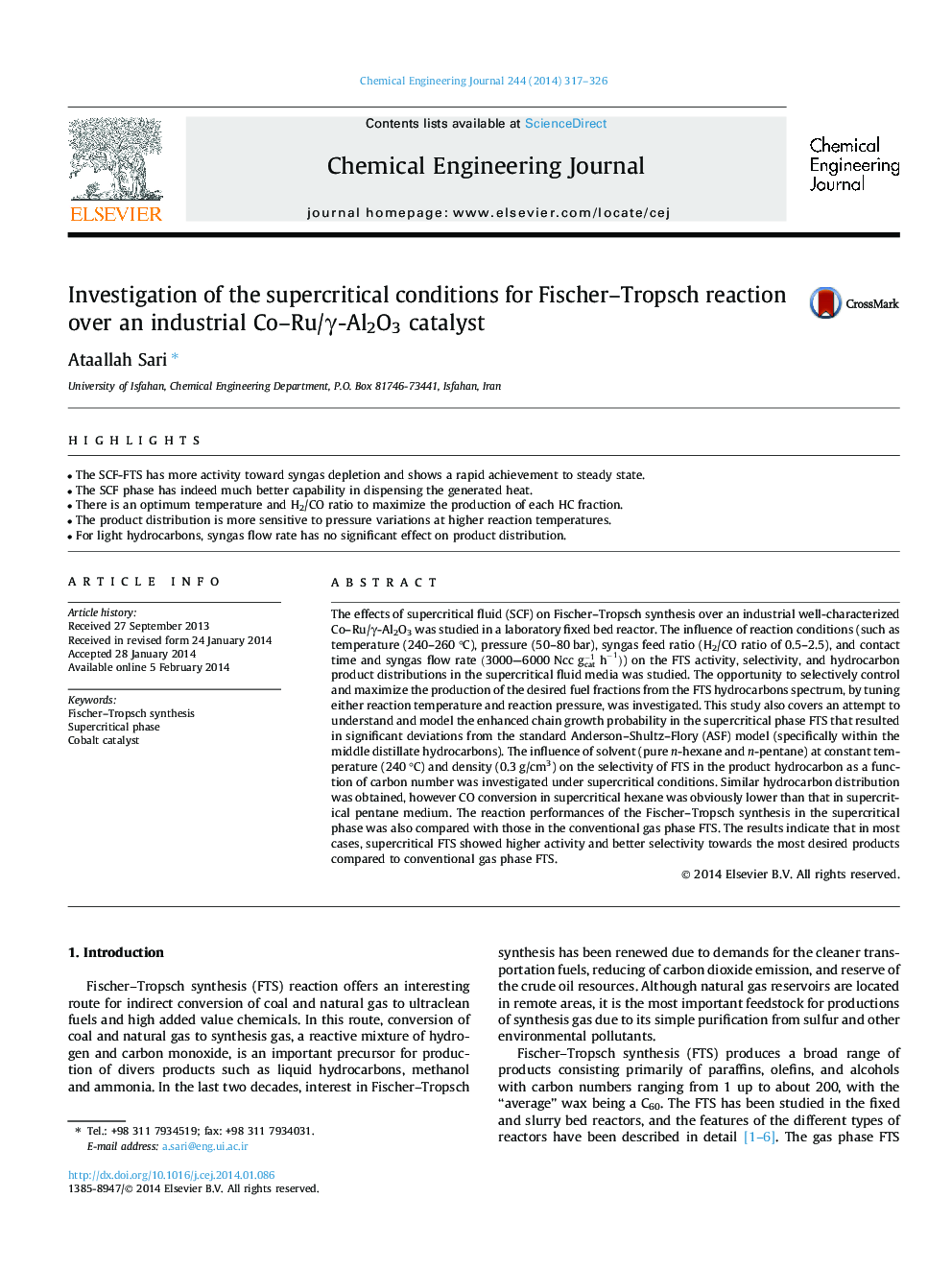| Article ID | Journal | Published Year | Pages | File Type |
|---|---|---|---|---|
| 147796 | Chemical Engineering Journal | 2014 | 10 Pages |
•The SCF-FTS has more activity toward syngas depletion and shows a rapid achievement to steady state.•The SCF phase has indeed much better capability in dispensing the generated heat.•There is an optimum temperature and H2/CO ratio to maximize the production of each HC fraction.•The product distribution is more sensitive to pressure variations at higher reaction temperatures.•For light hydrocarbons, syngas flow rate has no significant effect on product distribution.
The effects of supercritical fluid (SCF) on Fischer–Tropsch synthesis over an industrial well-characterized Co–Ru/γ-Al2O3 was studied in a laboratory fixed bed reactor. The influence of reaction conditions (such as temperature (240–260 °C), pressure (50–80 bar), syngas feed ratio (H2/CO ratio of 0.5–2.5), and contact time and syngas flow rate (3000–6000Nccgcat-1h-1)) on the FTS activity, selectivity, and hydrocarbon product distributions in the supercritical fluid media was studied. The opportunity to selectively control and maximize the production of the desired fuel fractions from the FTS hydrocarbons spectrum, by tuning either reaction temperature and reaction pressure, was investigated. This study also covers an attempt to understand and model the enhanced chain growth probability in the supercritical phase FTS that resulted in significant deviations from the standard Anderson–Shultz–Flory (ASF) model (specifically within the middle distillate hydrocarbons). The influence of solvent (pure n-hexane and n-pentane) at constant temperature (240 °C) and density (0.3 g/cm3) on the selectivity of FTS in the product hydrocarbon as a function of carbon number was investigated under supercritical conditions. Similar hydrocarbon distribution was obtained, however CO conversion in supercritical hexane was obviously lower than that in supercritical pentane medium. The reaction performances of the Fischer–Tropsch synthesis in the supercritical phase was also compared with those in the conventional gas phase FTS. The results indicate that in most cases, supercritical FTS showed higher activity and better selectivity towards the most desired products compared to conventional gas phase FTS.
